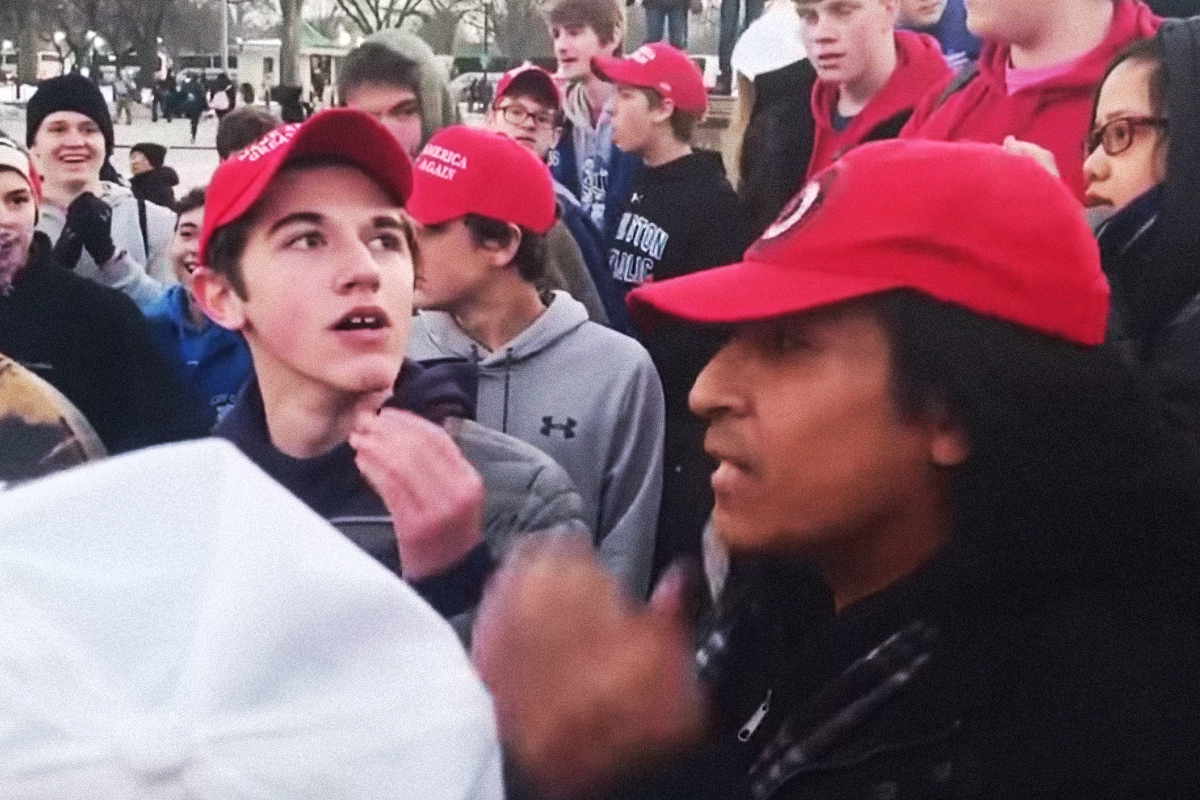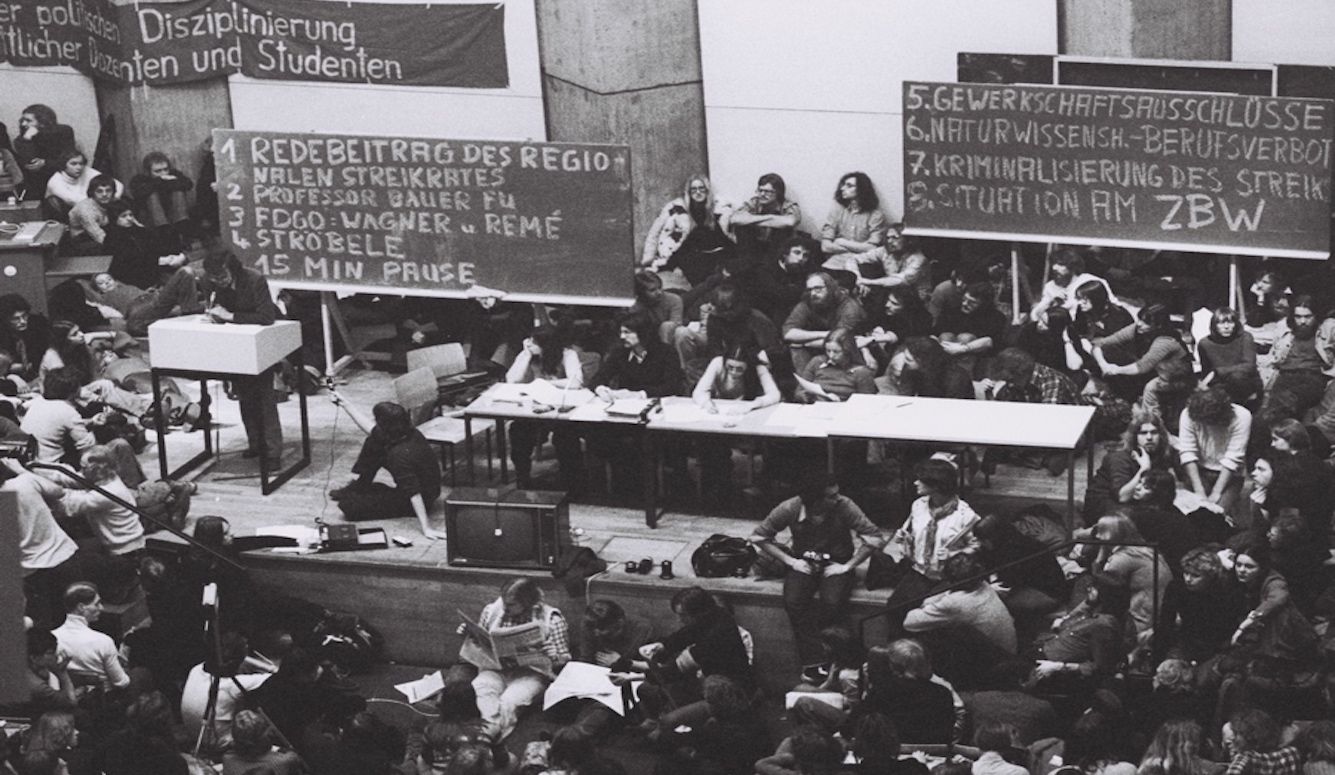Culture Wars
The Dangers of Defining Deviancy Up
The idea of defining deviancy down has attracted renewed attention from commentators in the Trump era.

In 1993, then-Senator Daniel Patrick Moynihan published an essay entitled “Defining Deviancy Down,” in which he argued that understanding the shift towards more permissive attitudes regarding crime and violence is crucial to their reduction. Specifically, he asserted that the redefinition of norms around deviant behavior (or “defining deviancy down”) had collectively shaped society in unintended ways, resulting in a desensitization to what might have once been considered shocking. By way of illustration, Moynihan referenced the 1929 St. Valentine’s Day Massacre in Chicago—the notorious gangland execution of seven men committed during the prohibition era. He reminded his readers that those killings had elicited universal public outrage, and then contrasted that reaction with a contemporary example: “On the morning after the close of the [1992] Democratic National Convention in New York City in July,” he wrote, a headline reported “3 Slain in Bronx Apartment, but a Baby is Saved…A mother’s last act was to hide her little girl under the bed.” These were also execution-style killings, but they were greeted with only a barely discernible nod of dismay. In the six decades between 1929 and 1992, a transformation had occurred in the levels of violence and criminal behavior that the public seemed willing to accept.
The idea of defining deviancy down has attracted renewed attention from commentators in the Trump era. In recent years, Moynihan’s analysis has been used to understand how Trump’s impact on the culture has increased the acceptability of previously taboo language, attitudes, and behaviors. In November 2015, Jonathan Capehart wrote an article for the Washington Post entitled “How Trump is ‘defining deviancy down’ in presidential politics.” Capehart argued that, “As the 2016 Republican presidential contest drags on, [Moynihan’s] diagnosis fit politics in general and the campaign of Donald Trump in particular. Just when you thought the Big Apple billionaire couldn’t sink any lower, he does. He gleefully dances through the nativist, racist, misogynistic slop as if he were Gene Kelly in Singing in the Rain. And to make matters worse, Trump is rewarded for it.” In a similar vein, Albert Hunt wrote an op-ed for Bloomberg in May 2017 entitled, “The Age of Trump is ‘Defining Deviancy Down’: When the president seems inept or corrupt, we shrug. If he ever fumbles through adequately, he is praised.”
But changes in social norms are not unidirectional—they can swing in the opposite direction and, instead of increasing permissiveness, norms can become more restrictive. This is what happens when we define deviancy up. Instead of treating atrocities as banal or becoming desensitized to wrongdoing, the most minor infractions are treated as if they are serious offenses. As the hasty condemnation of the behavior of a boisterous group of teenagers at the Lincoln Memorial on January 18 has reminded us, this trend is best illustrated by what we understand to be instances of prejudice, and how we respond.
Historically, “racism” has been defined as the belief in the superiority of one race over another. However, on campus and among progressives, the term has been redefined to mean “prejudice-plus-power.” This is leading to false distinctions such as the one made by Harvard Crimson editor Michelle Gao in 2018:
[The prejudice plus power group thinks] primarily of institutional racism and factors in a person’s power to use their racist beliefs against others. As one African American lead character from the 2014 movie “Dear White People” argues, “Black people can’t be racist. Prejudiced, yes, but not racist. Racism describes a system of disadvantage based on race. Black people can’t be racists since we don’t stand to benefit from such a system.”

Developments in how we think about sexism and misogyny have followed similar trajectories. What used to be understood as the belief that men were superior to women has expanded to include an understanding of systemic patriarchal structures and actions by a collective rather than the attitudes of individuals. Not surprisingly, the newly capacious definitions of racism and sexism have increased the number of situations and infractions that can fall under the rubric of these labels, and this has narrowed the spectrum of permissible views on a number of already sensitive topics, such as affirmative action, social mobility, immigration, gender imbalances in STEM fields, and so on. Matt Grossman, Senior Fellow at the Niskanen Center has explained how this is disproportionately stigmatizing the political opinions of political centrists and conservatives. To illustrate this point, he turned to common social science survey questions:
- “Racial resentment,” an aspect of “symbolic racism,” is measured by asking for agreement or disagreement with statements like “Generations of slavery and discrimination have created conditions that make it difficult for blacks to work their way out of the lower class” or “Irish, Italian, Jewish, and many other minorities overcame prejudice and worked their way up. Blacks should do the same without any special favors.”
- “Hostile sexism” is measured with agreement or disagreement with statements like “when women lose to men in a fair competition, they typically complain about being discriminated against” or “women are too easily offended.” The related “modern sexism” scale taps similar attitudes.
- “Authoritarianism” is measured with questions asking respondents to choose between pairs of parenting values such as “independence” vs. “respect for elders” or “self-reliance” vs. “obedience.”
Thus, in a crude popularization, respondents [to such surveys] who favor obedient children and individual-level explanations for economic disadvantage could easily be labeled racist, sexist authoritarians.
As the author’s use of the term “polarization” suggests, it is worth asking whether or not these new norms help to build the sense of community that they exist to fortify. There is an argument to be made that they have insofar as these redefinitions have united the political Left in their much-discussed culture of callout and outrage. However, the strengthening of ties within a narrow subset of the population has come with a significant cost to the sense of community within society more broadly. So alarming has this political polarization become that nearly three in four foreign policy analysts and commentators surveyed in September of last year described it as a critical threat to the national security of the United States.
The expanded definitions of racism and sexism are rooted in an understandable desire to protect members of marginalized groups, but they do not bring us any closer to that goal. In addition to the price we pay in social divisions, the new definitions have done little to actually address racial or other forms of inequality in a meaningful way. Recent data suggest that little has changed in the last 40 years in income inequality between whites and blacks and that reductions in the gender wage gap have stalled. Furthermore, it’s likely that this new focus has distracted those who adhere to it from the hard work of practical, tangible political change.
This was the prescient argument made by the philosopher Richard Rorty more than 20 years ago. In a series of lectures on the history of American civilization, Rorty all but predicted the rise of a populist political figure like Donald Trump. Reflecting on Rorty’s warning in an article for the Atlantic, Conor Friedersdorf offered this summary:
This Left is more likely to participate in a public shaming than to lobby for a new law; it is more likely to mobilize to occupy a park or shut down a freeway than to register voters. It “exaggerates the importance of philosophy for politics, and wastes its energy on sophisticated theoretical analyses of the significance of current events.” Its adherents “have permitted cultural politics to supplant real politics, and have collaborated with the Right in making cultural issues central to the public debate.”
Social norms generally change slowly. It is unrealistic to expect that a reversal of our current trend lies just around the corner. However, if we’re looking to start the slow process of bridge-building, we might begin by acknowledging the price we’re all paying for expanding our understanding of what constitutes deviancy. In a course I’m currently teaching on viewpoint diversity, a centrist student recently approached me after class and asked how she could have a conversation with some of her more progressive friends. She indicated that every time a topic related to race or gender arose, the differences described here would stall the conversation. She asked what I thought she could do. I suggested that she gently ask her friends to describe their long-term vision of the outcome of their current approach and to explain where they think it will lead.






